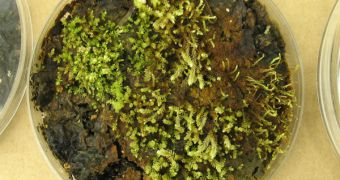Scientists keeping a close eye on the Teardrop Glacier in the Canadian Arctic now say that, as this block of ice continues to retreat, plants that have spent several hundred years buried beneath it are beginning to regrow.
The researchers documents their findings in an article published in this week’s issue of the journal Proceedings of the National Academy of Sciences.
They explain that back in the 1990s the Teardrop Glacier's retreat rate was one of just 2 meters (6.56 feet) per year.
It was in 2009 when the glacier was documented to have reached a retreat rate of 4.1 meters (13.45 feet) per year.
Mongabay reports that, while investigating this new retreat pattern, the University of Alberta scientists came across some 60 plant species (i.e. several mosses and other non-vascular plants) that had emerged from beneath the glacier.
The researchers were fairly surprised to find that, although they had spent about 500 years buried in ice, some of these plants showed clear signs of regrowing.
More precisely, both the mosses and some of the non-vascular plants in their proximity sported green tips and even fresh offshoots.
In order to confirm these findings, samples of the plants found in this part of the Canadian Arctic were collected and brought back to the laboratory.
Once there, the researchers managed to trick a third of the plants they had stumbled upon into regrowing.
By the looks of it, the plants only managed to regrow because some of their viable cells acted as stem cells and compelled the rest of their body to regenerate.
Although this phenomenon, known to the scientific community as totipotency, has been documented before in mosses, researchers were unaware of the fact that 500-year-old specimens were capable of behaving in this manner.
The University of Alberta scientists say that the plants most likely came to be buried underneath the glacier during the Little Ice Age (i.e. AD 1550 to AD 1850), when this block of ice was at its maximum.

 14 DAY TRIAL //
14 DAY TRIAL //